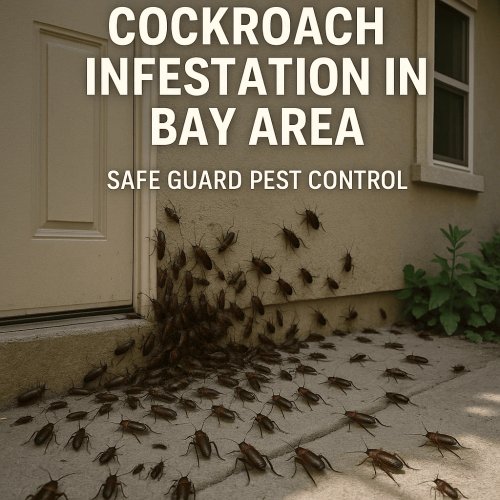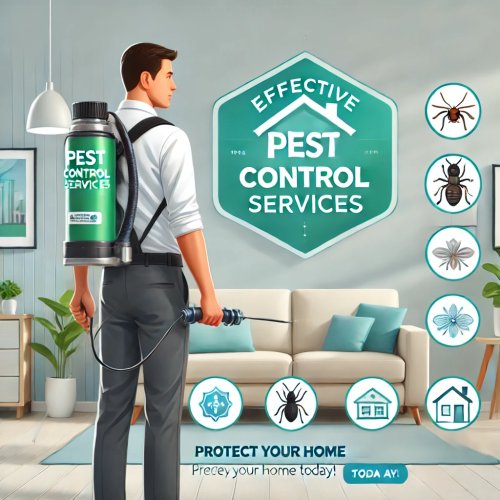NY State & Cornell IPM Update on Spotted Lanternfly
Get the latest on spotted lanternfly from NY State & Cornell IPM program. Learn how Safe Guard Pest Control helps protect your home and community.

New York State and Cornell University Update on Spotted Lanternfly: What It Means for You
The spotted lanternfly, an invasive pest threatening New York’s environment and economy, has recently been the focus of an important update from New York State and Cornell University’s Integrated Pest Management (IPM) program. As the owner of Safe Guard Pest Control, I want to share what this means for our community, how we’re stepping up to manage this threat, and what you need to know to protect your property.
Introduction to the Spotted Lanternfly Threat
The spotted lanternfly (Lycorma delicatula) is a strikingly beautiful insect, but don’t let its looks fool you. This pest feeds on over 70 plant species, including valuable crops like grapes, apples, and hardwood trees. Since its arrival in the U.S., it’s become a growing headache for homeowners, farmers, and landscapers alike.
About the New York State and Cornell University Partnership
In a combined effort, New York State’s Department of Agriculture and Markets and Cornell University’s IPM program have been actively tracking and controlling spotted lanternfly populations. This partnership pools scientific expertise and state resources to develop smart, sustainable pest management strategies.
What is Integrated Pest Management (IPM)?
IPM is a holistic approach that combines biological, cultural, mechanical, and chemical tactics to manage pests effectively while minimizing environmental impact. Rather than relying solely on pesticides, IPM emphasizes monitoring, prevention, and targeted treatments.
Why This Program Matters for Pest Control
This collaboration keeps pest control professionals like Safe Guard Pest Control informed with the latest research and recommendations. It helps us adopt best practices that protect your home or business without unnecessary chemical use.
Current Status of Spotted Lanternfly in New York
Areas Most Affected
The update highlights that spotted lanternfly populations remain concentrated in counties like Rockland, Westchester, and Dutchess. However, isolated cases have appeared further afield, raising concerns about spread.
Impact on Local Ecosystems and Agriculture
The lanternfly’s sap-sucking weakens plants, leaving them vulnerable to disease and death. For growers, this translates into serious economic losses, especially in vineyards and orchards.
Key Findings from the Latest Update
Population Trends and Spread
Thankfully, efforts have slowed the pest’s expansion in some hotspots, but vigilance is still critical. Early intervention has proven effective at containment.
Effectiveness of Control Measures
The program reports success using a mix of methods: mechanical tree banding, targeted insecticide treatments, and public education campaigns.
How Safe Guard Pest Control is Responding
Our Expertise in Managing Spotted Lanternfly
At Safe Guard Pest Control, we pride ourselves on staying ahead of emerging pest threats. We train regularly on the newest IPM techniques tailored to the spotted lanternfly.
Tools and Treatments We Use
Our team uses environmentally responsible insecticides approved under IPM guidelines, plus physical controls like sticky bands and tree removers. We combine these with careful monitoring to maximize impact.
What Residents and Businesses Should Know
Identifying Spotted Lanternfly
The insect is easy to spot once you know what to look for — distinctive gray wings with black spots and bright red underwings visible in flight. Nymphs are smaller and black with white spots.
Reporting Sightings to Authorities
If you spot a lanternfly, please report it to the New York State Department of Agriculture. Early reporting helps contain outbreaks before they spread further.
Preventive Measures You Can Take
Remove the pest’s favorite host, the tree-of-heaven (Ailanthus altissima), around your property if possible. Avoid transporting firewood or plant materials from affected areas. Seal cracks in windows and doors to prevent entry.
Why Early Detection and Action Matter
The faster we find and act on spotted lanternfly infestations, the more successful we are at stopping their spread and damage. It’s a community effort where everyone’s participation counts.
Future Outlook and Research Efforts
Cornell and New York State continue research on biological controls like parasitoid wasps and fungal pathogens, aiming for long-term sustainable solutions.
How Safe Guard Pest Control Supports Community Education
We regularly host workshops, distribute informational materials, and consult with local businesses to raise awareness. Knowledge is power when fighting invasive pests.
Conclusion: Working Together to Protect New York
The update from New York State and Cornell University is a call to action for all of us. At Safe Guard Pest Control, we are committed to being your trusted partner in this fight. Together, with smart strategies, community cooperation, and professional pest management, we can protect our homes, farms, and natural landscapes from the spotted lanternfly.
FAQs
Q1: What is the spotted lanternfly and why is it dangerous?
The spotted lanternfly is an invasive insect that damages a wide range of plants by feeding on their sap, causing stress, disease susceptibility, and even death.
Q2: How can I identify spotted lanternfly on my property?
Look for gray wings with black spots and bright red underwings. Nymphs are black with white spots. You might also see egg masses on trees or surfaces.
Q3: What should I do if I find spotted lanternfly?
Report it immediately to New York State Agriculture authorities and contact pest control professionals like Safe Guard Pest Control for inspection and treatment.
Q4: Are chemical treatments safe for my family and pets?
Safe Guard Pest Control uses EPA-approved, targeted insecticides as part of IPM. These are applied carefully to minimize risks to people, pets, and the environment.
Q5: Can I help prevent the spread of spotted lanternfly?
Yes! Don’t move firewood or plants from affected areas, remove tree-of-heaven near your home, and report sightings promptly.














